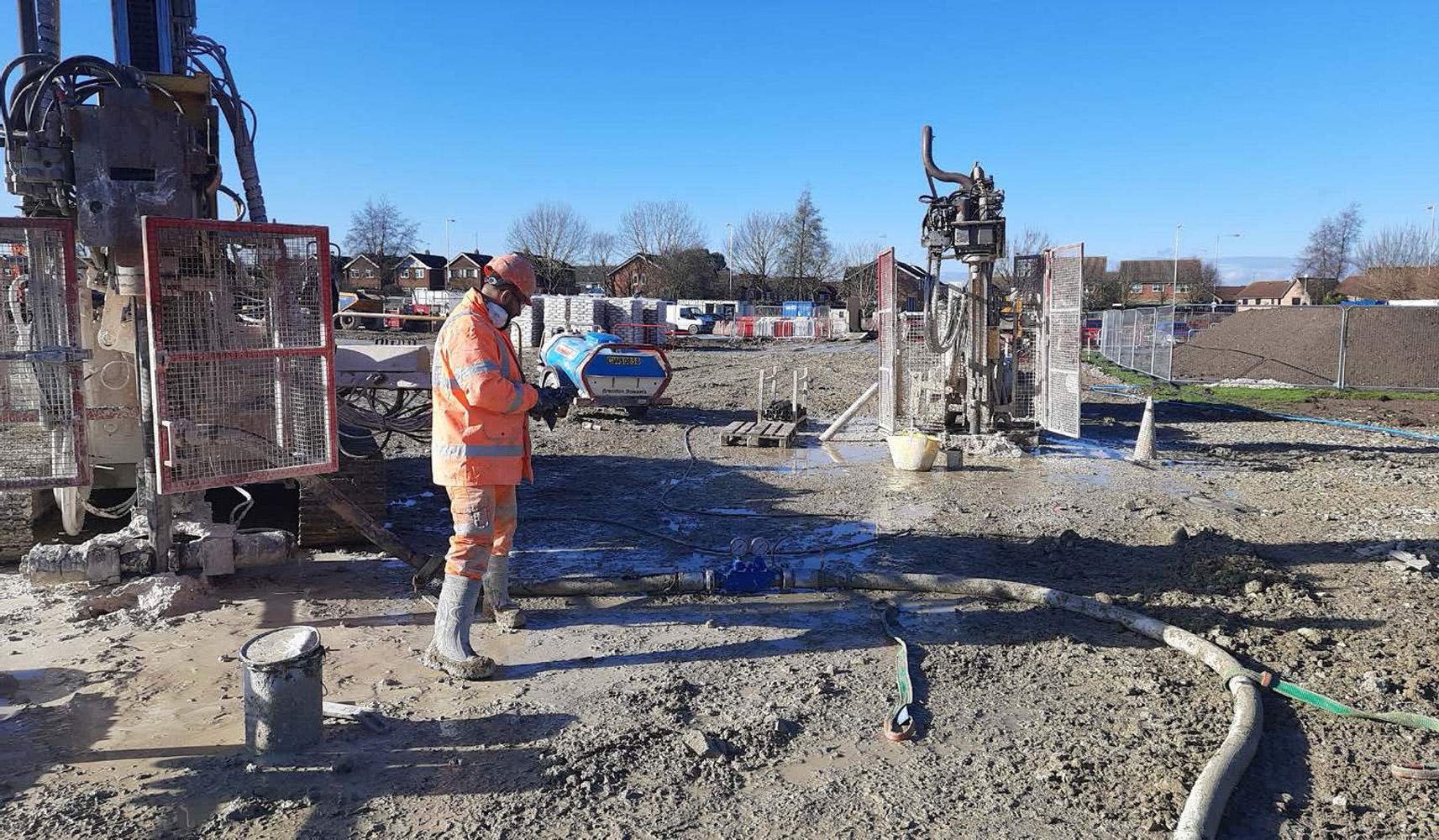Otterham Quay Lane
COMPACTION GROUTING AND DRIVEN PRECAST CONCRETE PILING.

Project Description
SCOPE OF WORKS 3196No 15m long, DPC Piles of 200mm diameter, 600No grout holes, 750 m3 of mortar
CLIENT Persimmon Homes
CONTRACTOR Aarsleff Ground Engineering Ltd
CONSULTANT Leap Geotechnical Ltd
TYPE OF CONTRACT Subcontract
CONSTRUCTION PERIOD January 2021 – May 2021
On behalf of client Persimmon Homes Ltd,whom we have previously worked with on several piling schemes, Aarsleff Ground Engineering has undertaken the ground improvement package for a new housing development on Otterham Quay Lane in Rainham, Kent.
Specifically, Aarsleff installed, 600No. compaction grout holes and 750 m3 of mortar over a 12-week period following behind with the installation of some 3,196No. 200mm 15m-long driven precast concrete piles.
Technically, the use of compaction grouting has been very effective in mitigation of the risk of solution features beneath the site.
Solution features are common phenomena within chalk areas, formed by dissolution of the chalk as a result of chemical weathering.
These solution features pose a risk to development and infrastructure works in these areas due to the presence of soft or loose infill materials which can lead to settlement and collapse.
On this site, compaction grouting has been used to stabilise solution features and metastable ground beneath roads and hardstanding areas as well as domestic gardens.
The property themselves being supported on Driven Precast Piles (DPC). Compaction grouting is a process employed for increasing the density of the soil by injecting a stiff, mortar-like grout under pressure through cased boreholes.
The grouting is usually carried out bottom-up, in successive stages of about 1m. As the grout is pumped in, it gradually forms a bulb which pushes the surrounding soil to the side, thereby increasing the relative density of the soil.
The degree of densification depends on the type of soil treated and the grid pattern for the injection points. Injection rates have varied from 2 to 6m3 per hour, with injection pressures in the range of 1 to 4MPa.
All the properties which have suspended floors are being supported on driven precast piles
(DPC), supplied by our sister manufacturing company Centrum Pile.
Case Study
Our environmental impact has been reduced with the selection of a CEM II cement for our mix design of the mortar. CEM II is a cementitious product that reduces landfill through re-using Fly Ash, a by-product from coal fired power stations, and reduces CO2 emissions up to 25% for each tonne produced.
Dr. Dan Adams
Aarsleff’s senior geotechnical consultant
Please enter your details to download this document
The Latest. News, podcasts & projects
Join our mailing list















